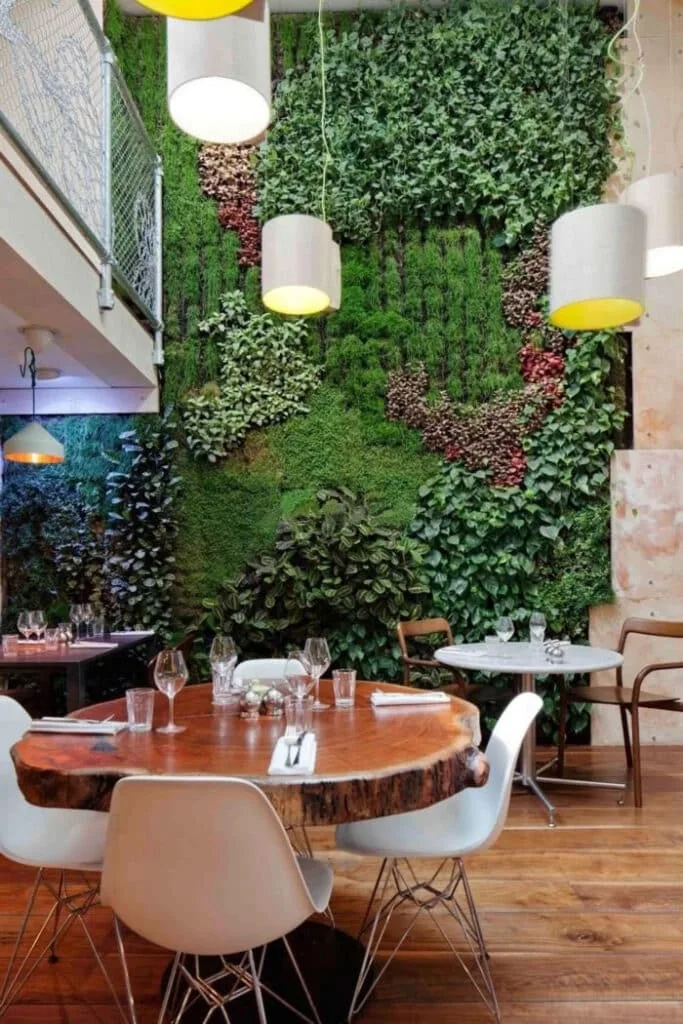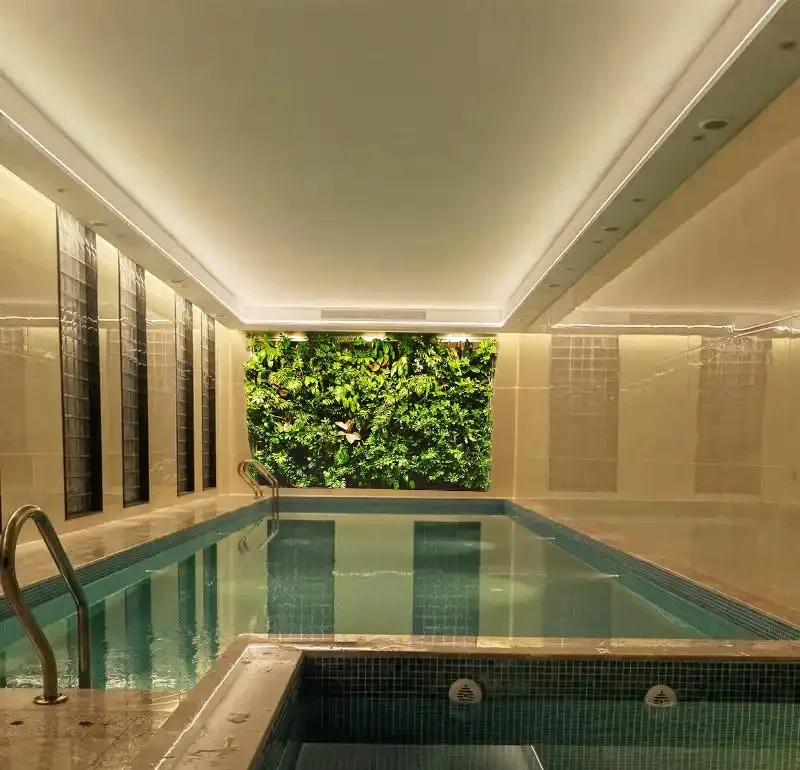Wall greening is an excellent way to transform dull buildings into vibrant landscapes, injecting green vitality into urban spaces. למרות זאת, traditional living walls are time-consuming and labor-intensive, with high maintenance costs. Artificial living walls stand out for their low maintenance and high aesthetic appeal, offering an evergreen visual feast without the hassle of tedious upkeep.
Compared to traditional flat landscaping, wall greening makes better use of space, transforming “concrete jungles” into true green forests. It represents a leap in greening concepts from two-dimensional to three-dimensional spaces. Depending on the greening methods, living walls can be roughly categorized into five types.
Table of Contents


1. Modular Artificial living walls
Modular components are used to plant greenery, enabling pre-cultivation and maintenance of plants and patterns in the modules for months before installation. These walls are durable, making them ideal for large-scale and challenging wall greening projects, especially for creating visually impactful wall landscapes.

2. Cladding Living Walls
Plants are planted directly on a thin cladding system attached to the wall, creating a planting surface system. The system is only 10 to 15 cm thick and includes waterproof and root-resistant features, which help protect and prolong the lifespan of buildings. It is easy to install and offers excellent results.

3. Climbing or Hanging Living Walls
Climbing or trailing plants, such as Boston ivy, creeping fig, English ivy, Fatshedera, or pothos, are planted on the wall. This method is simple and cost-effective, with good permeability and light transmission.


4. Flower Display Living Walls
Flowerpots are installed on vertical frames made of stainless steel, reinforced concrete, or other materials to create vertical greening. Similar to modular systems, this “miniature” module is easy to assemble and install. Seasonal flowers are primarily used, making it suitable for temporary wall greening or creating vertical flowerbeds.

5. Fabric Pocket Living Walls
This method is developed from the cladding wall greening system. It involves attaching soft plant growth carriers, such as felt, coconut fibers, or non-woven fabric, onto a waterproof-treated wall. Pockets filled with plant growth media are sewn into the carrier, where plants are grown to achieve wall greening.

Artificial living walls, with their maintenance-free, durable, and easy-to-install advantages, have become the preferred solution for wall greening. Unlike natural living walls, artificial walls eliminate the need for watering, pruning, or plant replacement, saving post-installation maintenance costs while providing year-round greenery. בנוסף, their flexible customization capabilities—whether modular, cladding, climbing, flower display, or fabric pocket designs—can meet diverse greening needs, making them suitable for commercial spaces, residential areas, hotels, shopping malls, and more.
Choosing artificial living walls means opting for an efficient and lasting greening solution. If you’re seeking a cost-effective and visually impactful way to enhance your space, contact us today to customize your exclusive greening design and let every wall radiate vibrant greenery!



